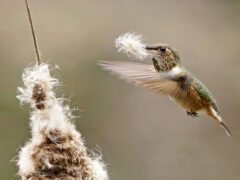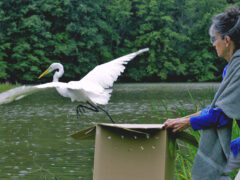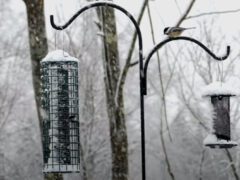The Four Keys to ID
- Size & Shape
A small, stout shorebird with a short neck, a short, slightly upturned bill, and rather short legs.
Relative Size
Larger than a Sanderling, smaller than a Wandering Tattler.

 robin-sized
robin-sizedMeasurements
- Both Sexes
- Length: 8.7-9.8 in (22-25 cm)
- Weight: 3.5-6.0 oz (100-170 g)
© Dorian Anderson / Macaulay Library
- Color Pattern
A dark blackish-brown bird with a neat white belly and a bold black-and-white pattern in flight. Breeding adults have a white spot next to the bill and white breast speckling. Nonbreeding adults are similar but with less white (mostly limited to wings, tail, and belly). Juveniles are similar but more brownish than blackish. The striking flight pattern features two white stripes on each wing, a white back stripe, and a mostly white tail with a thick black band near the tip.
© Andrew Johnson / Macaulay Library - Behavior
Flips over small objects on rocks and beaches to find small prey. Dislodges shellfish and other marine organisms from rocks using the short, chisel-like bill. Sometimes forages on beaches, much like Sanderlings, racing away from incoming waves, then running back to extract prey from wet sand as water recedes.
- Habitat
Nests in coastal sedge meadows in the arctic, often on little islands in ponds or rivers near the coast. Outside breeding season, forages along rocky Pacific coastlines (including jetties and breakwaters) and adjacent beaches or flats.
© Jonathan Vargas / Macaulay Library










































